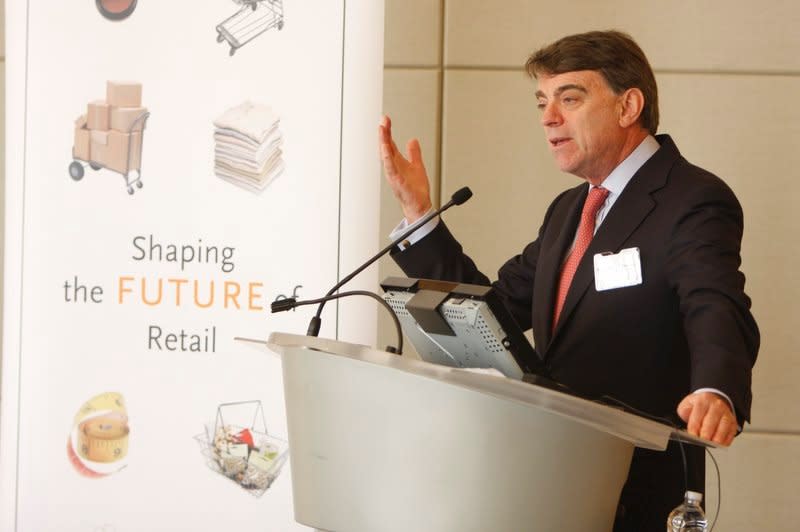Ensuring a Future-ready Retail Industry

The Jay H. Baker Retailing Center describes itself online as “an interdisciplinary industry research center championing the retail industry.”
“We bring together a network of retail leaders, founders, faculty and students to discuss the opportunities and challenges that impact the retail world of today and tomorrow,” the company says on its website.
More from WWD
And it is that future-ready portion of the mission, coupled with deep industry connections, that has made the center a success.
Steven Silverstein, chief executive officer and president at Spencer Spirit Holdings and a Wharton graduate who serves on the center’s advisory board, describes the center as a leading “think tank for the retail industry for the last 20 years, bringing together the hands-on experience of traditional brick-and-mortar retail with the innovation of the latest cutting-edge retail concepts. Past, present and future, all are relevant and essential.”
Daniella Vitale, CEO of North America at Salvatore Ferragamo, said the center is “an incredible think tank with knowledge of many sectors within our industry. Tech, marketing, retail, consumer behaviors, etc. And the staff that is always willing to support us on different projects and has asked students to work on different initiatives. Always producing great work.”
But how is the center’s mission executed, and how does it support research?
Former dean Tom Robertson and Joshua J. Harris, professor of marketing and academic director at the Baker center, said the center “facilitates teaching and research relevant to modern retailing. Courses at Wharton encompass retail strategy, supply chain, technology in retail and retail consulting.”
“The Baker Retailing Center plays three interrelated roles of value to the retail industry,” Robertson said. “The first is that we provide top talent for the retail industry. Secondly, research at Baker seeks to offer thought leadership important to retail executive decision-making. Thirdly, we are a conduit to interaction among industry leaders who serve on our boards and attend our retail conferences.”

Robertson also said the center plays a key role in the evolution of retail as the center itself evolves. “The foundations of the center support a strong future,” Robertson said. “Teaching will evolve and change as the challenges in the industry call for new course topics and modules. Research must constantly evolve to be relevant to the future, especially to incorporate technology and new forms of retail. Our retail executive boards will keep us in tune with new directions, and our conferences will continue to focus on future directions in retail.”
Peter Fader, the Frances and Pei-Yuan Chia professor of marketing at the Wharton School of the University of Pennsylvania, said the center “has been a wonderful resource to help facilitate, validate and promote my research.”
“Like many other research centers, Baker provides financial support for faculty and Ph.D. students,” Fader explained. “That’s great, and we really appreciate it. But that’s only one component of the help that they provide. They also help us get access to companies, which can help refine our ideas, obtain data and turn a ‘one-shot’ research project into a multipaper research program. Yes, other centers have similar capabilities, but few do so as frequently and proactively as Baker does.”
“Companies’ contacts can help refine research ideas at the early stages of a project. But these contacts can be equally — if not more — useful as a project is wrapping up, and a formal paper takes shape. Beyond the [one-on-one] conversations that I’ve enjoyed with the companies that have provided data to me, Baker makes it possible to present our work to broad audiences (e.g., their various boards),” Fader said, regarding validation.
Fader said he truly appreciates those sessions, noting that “it’s really valuable to frame my modeling work to make it understandable and relevant for such an audience, and I gain a lot from their sharp questions and practical suggestions. My guess is that Baker exposes more faculty to these kinds of sessions than any other research center, so it’s a very valuable service for many of our colleagues.”
And with promotion, Fader said “whether it’s events, social media, newsletters or informal referrals to journalists and PR agencies, Baker does a great job of getting the word out about faculty work that might be relevant to the retail community.”
“Likewise, they serve as a ‘lightning rod’ to attract many inbound inquiries, which helps us get even more visibility than our colleagues at other schools,” Fader said. “This helps create a ‘virtuous cycle’ that benefits our faculty, the retail industry and, of course, the school’s reputation. The center also does a good job of screening these inquiries to make sure there is sufficient merit to them (and to direct them to the right faculty), so it’s a good use of our time.”
The center also has a direct impact on what’s taught in the classroom.
Patti Williams, vice dean of Wharton executive education, and Ira A. Lipman, associate professor of marketing at Wharton, said the Baker Retailing Center “is an extraordinary resource and partner for faculty at the Wharton School. From providing access to outstanding, high-profile guest speakers in my classes [such as the president of ThredUp and the cofounder of Allbirds] to sponsoring cutting-edge research in collaboration with the center’s member companies, the Baker Retailing Center highlights retailers and their interests and concerns in our classes and our scholarship.”
Silverstein touted the curriculum, which has evolved over the past 20 years. “The essence of retail is that it inspires us all as consumers,” Silverstein said. “At one level, there are multiple levels of innovation — e-commerce, metaverse, etc. — at the same time, for now, and [the] foreseeable future, we still have to keep our eye on brick-and-mortar. The Jay Baker curriculum studies retail in context, how did we get here and where we go from here.”

